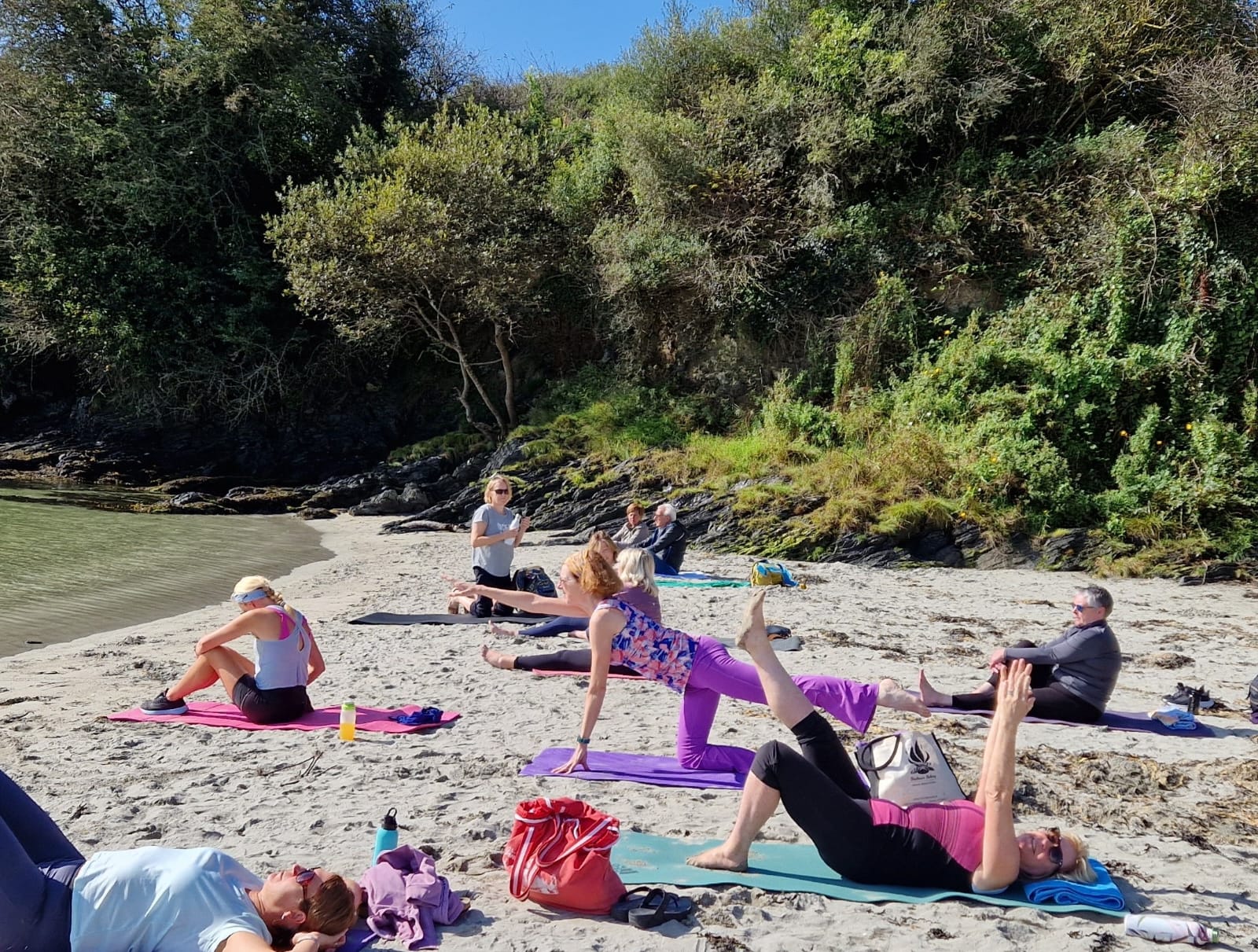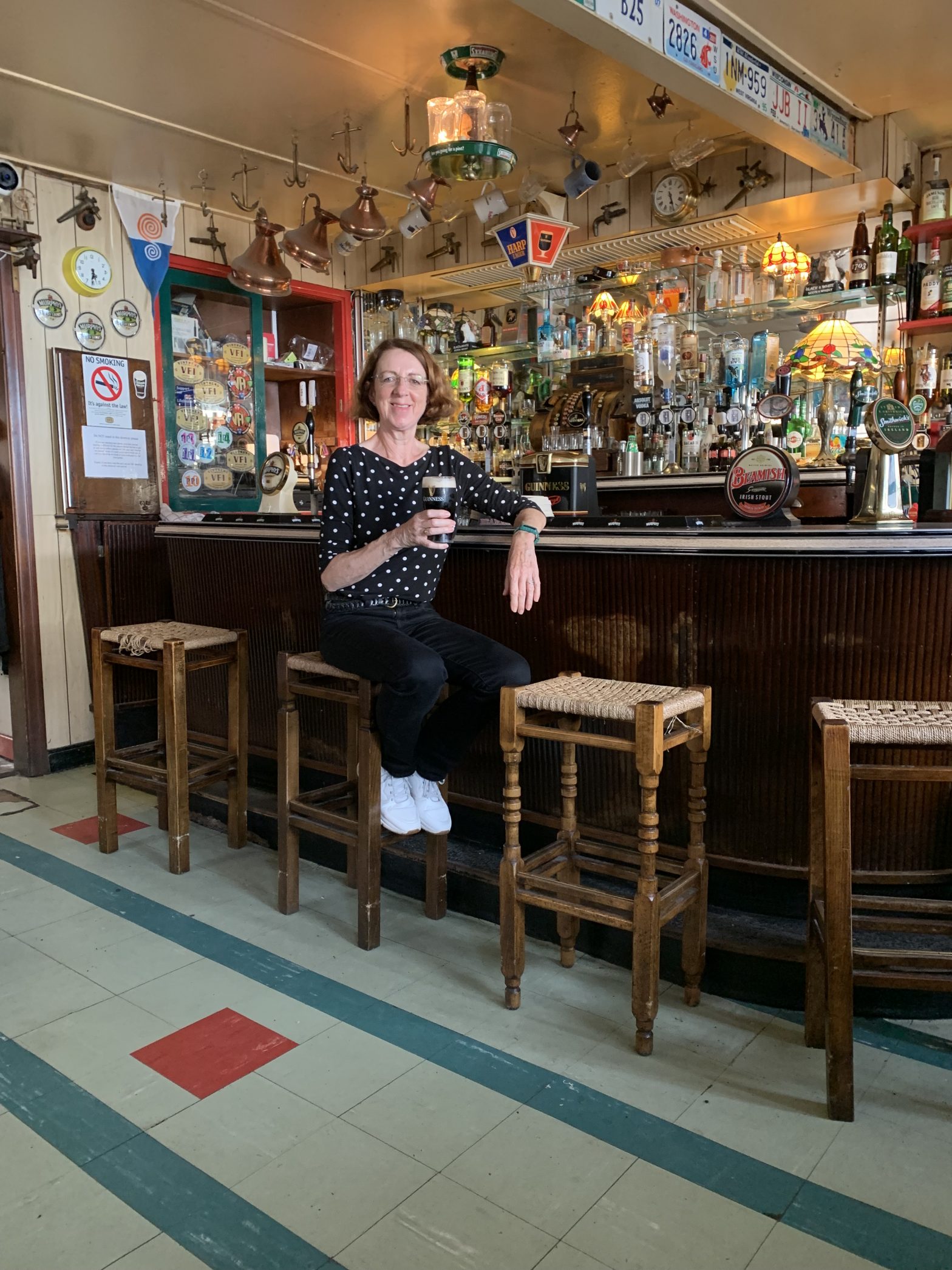Kinsale is the most gorgeous little town in County Cork. It really is picture postcard perfect, with sweetie-coloured houses, a marina with a full complement of yachts and super-yachts, a sandy beach, and plenty of lovely shops, pubs and restaurants. And what’s more, the sun shone for us this week!



Of course when you’re in such a perfect location and someone suggests joining a class for beach Pilates, the immediate response is ‘Yes! Sign me up – what a great idea!’ So I found myself on the beach, on a very sandy yoga mat, enthusiastically working on my core stability. However when a post-Pilates swim was suggested in the bracing Celtic sea, I quickly resurrected my “inflamed verucca” which once got me off a whole term of games at school.



What I really enjoy when travelling is discovering the many gaps in my knowledge, and having the opportunity to fill those gaps and join up some of the dots. And this is exactly what happened when we went to Cobh (pronounced ‘Cove’) east of Cork. I had no idea that Cobh used to be called Queenstown, and this is where the Titanic and all the other big transatlantic ships stopped off as their last port of call before crossing the Atlantic. I vaguely thought Queenstown must be near Belfast, as that’s where the Titanic was built … not sure why I thought this, as I do know the difference between a ship and a homing pigeon.
The Cobh Heritage Centre tells the story, not just of the Titanic, but of the six million Irish people who emigrated between 1848 and 1950; two and a half million of whom left from Queenstown. To put this in perspective, there were 8 million people in Ireland in 1841 and today the population is 5 million, so it’s still not back to pre-famine numbers.
In addition to the emigrants fleeing famine and seeking a new life in the US, there were also convict ships and forced labour ships heading to Australia and the West Indies. Punishments were harsh; Mary Cassidy aged 19 from Dublin was sentenced to seven years transportation for stealing a pocket handkerchief, and Annie Cullen, 21, received a life sentence for possession of a stolen cow – and she didn’t even steal it! But on the plus side, the Irish convict ships were considered less troublesome by the British navy, who believed that “the rigours of Irish life better prepared the prisoners for the hardships of the voyage.”


To add a personal touch to the visitor experience at Cobh, each visitor is given the identity of a traveller who passed through Queenstown, and is invited to discover what happened to their alter ego on their journey. I was a little perturbed to learn that my alter ego, Winifred Hull, was a passenger on the Lusitania when she was torpedoed in 1915.
I was convinced that it was all going to end badly for poor Winifred, but I was wrong and she was rescued. The museum has the letter she wrote to thank the family who put her up in their home after she was pulled out of the sea … phew!
And of course, no visit to Ireland would be complete without a trip to the pub – or indeed several trips to the pub –



Cheers! Sláinte! And thank you, Kevin, for lending me your pint of Guinness to add authenticity to my photos!
